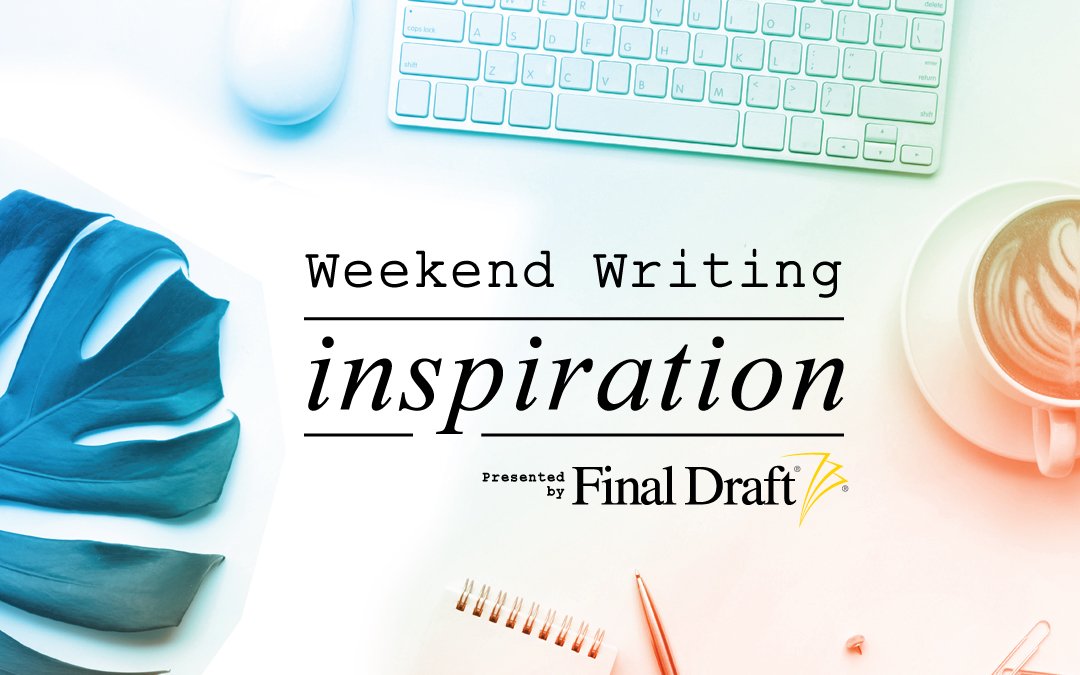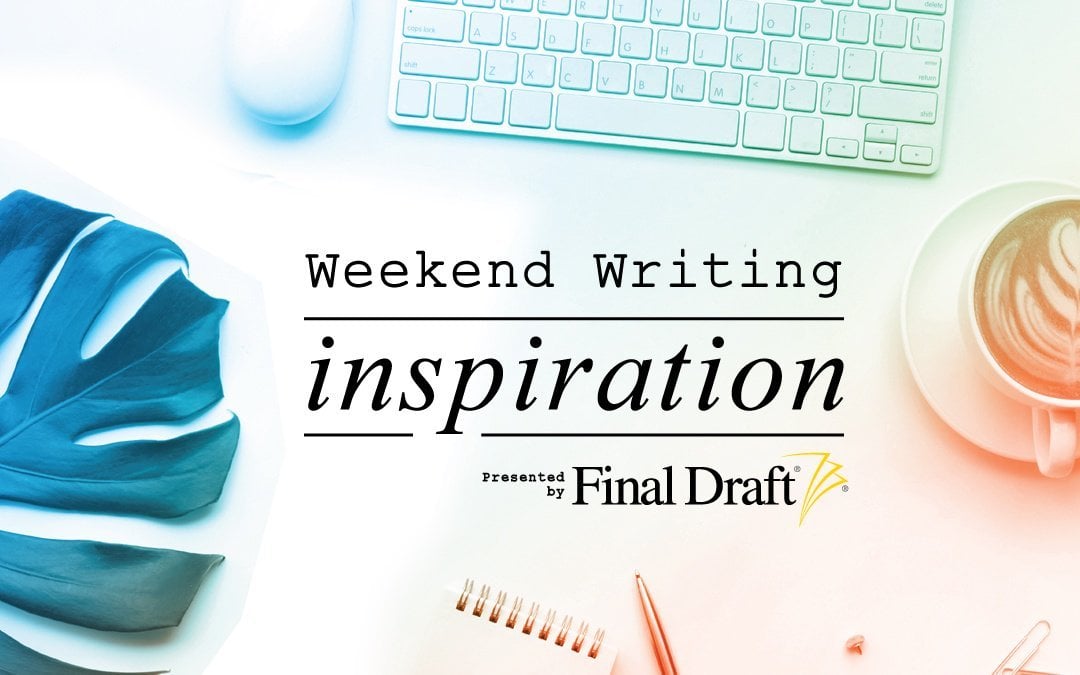Weekend Writing Inspiration: Tame Your Inner Writing Gremlins
February 2, 2019
The inner game of writing has been our subject for the last two weeks. In week one we discussed how to survive hearing the constant stream of “No” when it comes to our writing. Then we covered dealing with familial fears about our chosen path — including those projected fears we may have internalized.
Tame Your Inner Writing Demons
- Negative thoughts often originate in our early years
- Negative thoughts aim to keep us “safe”
- Awareness and understanding are the keys to change
- Shifting Your Inner Dialogue
But what can we do when the negative messages seem to come from inside of us? What if, when we’re sitting down to write, gearing up for a new script, or trying to forge our way through another rewrite, our own mind is against us?
Let’s first talk about the impacts of that negative inner monologue, then how to use simple ways to change your internal dialogue.
Negative thoughts often originate in our early years
The internal criticisms directed towards yourself and your writing vary by name — inner gremlins, inner critic, negative self-thoughts, or limiting beliefs — but their cause, impact, and intent are the same.
Negativity towards ourselves or our writing often begins in childhood or youth, either as the result of survival strategies or creative wounds.
For example, as children, we seek constant approval. In order to survive, we have to be accepted by our parents and our tribe. So we learn to fit in; even if that means sacrificing what matters to us, or re-programming what we think if our community tells us it isn’t an acceptable pursuit, behavior, or life choice.
We might also have painful experiences associated with our creativity, self-expression, or writing, which cause us to avoid similarly traumatic experiences in the future. A creative wound might look like a parent who sets impossible standards or other children who make fun of your early creative efforts.
Creative wounds can occur later in life as well, like facing repeated rejections from the industry, receiving feedback from an instructor who disparages the quality of your writing, or working with a mentor who creates the expectation that there’s only one “right” way to write, leaving you to feel incapable.
All of these experiences are internalized, and we use them to guide our future choices.
Negative thoughts aim to keep us “safe”
Once these damaging experiences have occurred, in order to keep ourselves “safe,” our negative internal thoughts steer us away from similar situations where we anticipate having comparably painful outcomes. Usually, indirectly.
Sometimes, we might be conscious enough to notice that we’re afraid of “the same thing happening again.” But often, it’s less overt.
A subtle, “This is too hard,” or “I’m not capable of figuring this out,” are examples of the stealthy nature of this kind of negative narrative. They might look like frustration or lack of belief in yourself, but really, they are a big “Do Not Enter” sign held up by your psyche saying, “This isn’t safe, go back to the comfort zone!” — Even if your rational mind is telling you a different story about how you’re being “realistic.”
It’s important for us to think of these messages as transmissions from an alternate-time self; one who’s trying to keep us safe from risk and pain, and who might not understand that the negative messages are actually keeping us from reaching the writing goals we’re striving for.
Awareness and understanding are the keys to change
One of the most fascinating things about this inner dialogue is that it tends to be highly repetitive. It can, however, shift into a new line of attack when you reach new milestones or levels of achievement with your writing.
Your job is to be aware of your internal dialogue, and learn to navigate past it and back to your writing, regardless of how scared your younger, wounded self is. If you pay attention to what you’re saying to yourself — and when you’re saying it — you can start to recognize your own “routine”.
For example, if you notice that the fearful thoughts get louder every time you get close to finishing a draft, chances are you’re afraid of finishing because it means you’ll be taking the next step to putting that draft out into the world.
Or perhaps you might notice your negative thinking intensifies just as you hit the end of the first act or at the mid-point of a script — common places screenwriters get assailed with doubts.
The key is to first recognize these inner messages for what they are: fears and doubts, not truths. Then, help yourself get back to work through a more compassionate inner thought process instead.
Three steps to shifting your inner dialogue
Here’s how you can begin to shift your internal conversation about your writing:
1. Be aware of what’s happening.
Notice what your inner, unsupportive conversation sounds like:
- What do you typically say to yourself when your negative inner dialogue comes up?
- At what point in a writing project does it tend to come up?
- Is it a constant running monologue, or does it occur at specific times?
- Does it tend to revolve around specific fears, like not being original enough or feeling lost or bored?
- What else do you notice?
2. Write down your limiting inner thoughts.
When you notice the thoughts coming up, write them down on paper so you can see them in black and white for what they are. (Hint: they lose a lot of their power when you get them out of your head and on paper in front of you.)
3. Play with rewriting the thoughts.
If your close friend was saying something similar to themselves, how might you play with helping them rewrite it into a more positive, supportive message?
“Play” is the operative word here, taking the pressure off getting it “right” and moving the process into the realm of experimentation, learning, and discovery — a much more creative place to work from. You won’t just write down the opposite of whatever the negative message is, but rather explore turning it into something encouraging and most importantly: believable.
For example, don’t go from “it’s too hard” to “it’s easy.” That’s overly simplistic, and might, in fact, be a lie.
Instead, try something like, “This may be hard, but it’s my job as a screenwriter to master this, so I’m going to give it everything I’ve got,” or, “It’s okay for things to be hard, that means they’re worth doing. If I need to get some help or feedback to get me over this hump, I’m going to do it.”
Pick something believable that works for you.
4. Repeat as needed.
Then, keep repeating this method.
Writers I coach often keep a notebook on hand, ready to jot down and antidote (rewrite) the negative thoughts as they come up. Others will do a mental “clearing” in their notebooks before they begin writing each day. Still others will periodically do what I call “fearstorming,” which is essentially a “brain dump” of fears onto paper to get them out of their mental spin cycle and ready to focus again.
Whichever way you do it, the important thing to remember is: the gremlins appear when you’re reaching for new heights with your writing and your fears are trying to stop you.
Soothe your fears by rewriting them into supportive statements, and turn back to getting your words on the page where they belong.
Your weekend writer’s assignment
This weekend, spend a few minutes jotting down some of your common, internal negative messages, or “fearstorm” a list starting with the phrase, “I’m afraid that…” and see what comes out. (I recommend handwriting these.) Then, see how you might rewrite the limiting thoughts into more supportive thoughts. You might even want to compile them into a list of supportive thoughts to read before you begin your writing each day.
| Got questions you want answered? After working with hundreds of writers over the last seven years, writing coach and Called to Write Founder Jenna Avery has answers for you about how to balance your life and your screenwriting, trust yourself more as writer, fulfill your call to write, and more. Submit your questions to finaldraft@calledtowrite.com or via Jenna’s online form at https://calledtowrite.com/final-draft and she may choose your question to answer anonymously in a future article. |
Written by: Jenna Avery
Jenna Avery is a screenwriter who specializes in sci-fi action and space fantasy, and her most recent project is a post-apocalyptic coming-of-age story for a Canadian producer-director. Jenna is also a writing coach and the founder of Called to Write, where she has helped hundreds of writers overcome procrastination, perfectionism, and resistance so they can get their writing onto the page and into the world where it belongs. Jenna writes about writing and fulfilling your creative calling at calledtowrite.com, writes for ScriptMag and Final Draft, and teaches at Script University. Download Jenna’s free guidebooks for writers, including “How to Choose Your Next Book (or Script!)” when you join her mailing list at https://www.calledtowrite.com/mailing-list- Topics:
- Discussing TV & Film




